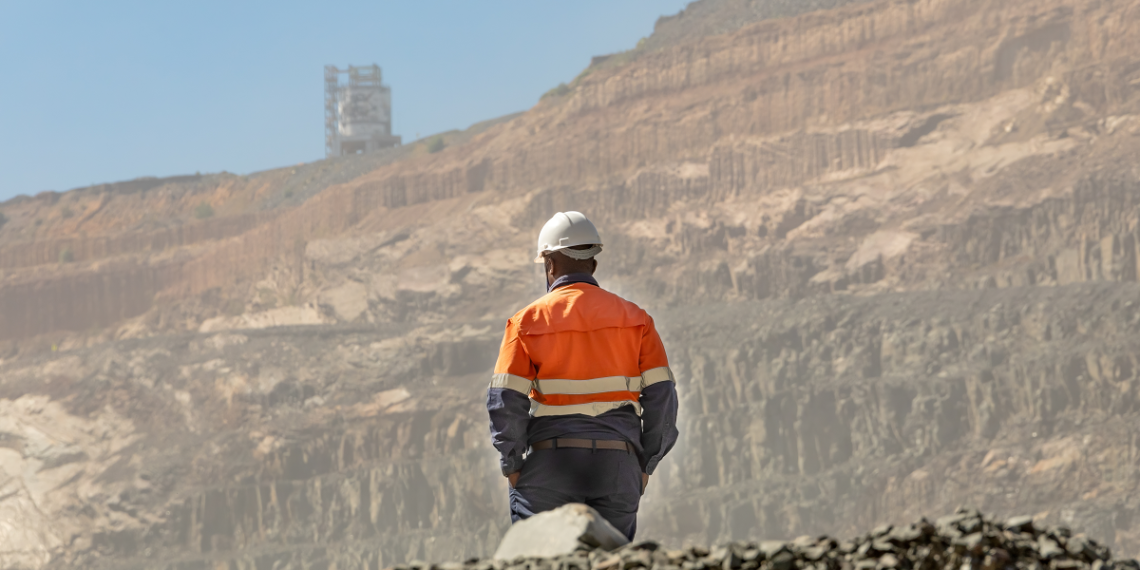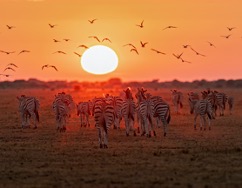Located at the centre of Southern Africa, positioned between South Africa, Namibia, Zambia, and Zimbabwe, Botswana has grown from being one of the world’s poorest countries at independence in 1966, to rapidly become one of the world’s development success stories.
According to the World Bank, much of this dramatic growth has come on the back of the country’s significant diamond wealth.
While Botswana’s gemstone wealth – it is the world’s leading producer of diamonds by value – has helped turn the nation’s fortunes, there are fears that the country’s reliance on diamonds makes the economy vulnerable to external shocks, as diamonds contribute over 80% of total exports and are a major source of fiscal revenues.
The World Bank says this vulnerability was evident during the COVID-19 pandemic when the economy contracted by 8.7% in 2020 and fiscal pressures rose.
The US International Trade Administration (USITA) recently noted that Botswana’s government is fully aware of this issue and is encouraging and actively seeking further investment in its mining industry through the exploration and exploitation of non-diamond minerals, to diversify the minerals sector from its dependence on the diamond industry.
Currently, other mined minerals include nickel-copper, coal, soda ash, gold, silver, semi-precious stones, and granite.
The USITA says Botswana also has untapped uranium, lead, and zinc reserves that companies are seeking to exploit. The country has established entities that are key to the successful development of this sector, including the Minerals Development Company Botswana (MDCB), which was established to manage the government’s interests in mining companies and to seek out new investment opportunities.
Elsewhere, the private sector, in partnership with the Botswana Chamber of Mines, is conducting a pre-feasibility study on the processing of copper-to-copper metal. The study is supported by the Ministry of Minerals and Energy and, if viable, it will result in the construction of a US$230M refinery to be developed through a public-private partnership model. Another feasibility study is being conducted on the beneficiation of bitterns, with the aim to produce sulphate of potash, sodium sulphate, and vacuum salt from what is currently the bitterns waste stream.
USITA says opportunities for trade also exist with Debswana mining company as the largest mining company in the country.
Recent non-diamond successes
With the growing investment interest in Botswana’s metals production potential, several recent successes have boosted confidence that the country can add to the benefits metals mining can bring to its GDP.
TSXV-listed Premium Nickel Resources (TSXV: PNLR) recently announced promising assay results from its wholly-owned Selebi nickel-copper-cobalt (Ni-Cu-Co) sulphide mine in Botswana.
This current phase of drilling is focused on an area at the western down dip edge of the historic Selebi Measured Mineral Resources of 0.37Mt of 1.01% Ni and 2.19% Cu, Indicated Mineral Resources of 6.82Mt of 1.05% Ni and 2.29 % Cu, and Inferred Mineral Resources of 4.09Mt of 0.86% Ni.
“PNRL’s work on the Selebi Mine continues to demonstrate significant expansion potential and mineralization continuity along strike, down dip, and down plunge of the historic 2016 SAMREC compliant resources,” CEO Keith Morrison, said.
Giyani on target with battery metal development plans
Elsewhere, Giyani Metals Corp. (TSXV: EMM) recently reported that it is making good progress with its K.Hill battery-grade manganese project in the country.
The project development schedule includes the construction of a demo plant in South Africa prior to the construction of a full-scale plant in Botswana.
In late December 2022, the company reported that construction of the Demo Plant, to be located north-west of Johannesburg, is proceeding with engineering currently 85% complete and procurement 40% complete. As part of the procurement package, Giyani has entered into an agreement with leading industrial automation and test and measurement provider Yokogawa Electric Corporation (TSE: 6841) to provide a Centum VP distributed control system (DCS).
The agreement forms part of a wider commercial relationship being developed with Yokogawa to provide advanced automation control systems to Giyani within an attractive fixed budget package. The DCS will give the Demo Plant greater functionality and allow better transfer of programming and data from the Demo Plant to the commercial plant, to be built in Botswana.
The Demo Plant will be capable of producing up to 600kg per day of high purity manganese sulphate monohydrate (HPMSM) crystals and the company is on track to ship samples to potential off-takers in H2 2023.
“We continue to make significant progress towards our objective of becoming a premier, low-carbon supplier of a critical battery raw material to the electric vehicle market,” said executive chair, Jonathan Henry.
“As we advance towards the construction of what will be one of the largest HPMSM projects globally, we are pleased to be working in partnership with high-end technical and commercial providers such as Yokogawa. Attracting these quality partners provides us with state-of-the-art technology as well as the potential for both capital and operating cost benefits both for the Demo Plant and the commercial scale project we are planning to build in Botswana. With our FS completed and our Demo Plant on track for production, we are looking forward to a pivotal 2023.”
Cobre attracts international funding support for its Botswana copper plans
The international investment interest in Botswana was again recently highlighted when Cobre Limited (ASX: CBE) received firm commitments from institutional, sophisticated, and professional investors to raise gross proceeds of A$5M.
Leading global investment manager, Sprott Asset Management, invested almost A$2M into the placement, while UK-based Metal Tiger plc (AIM: MTR), the company’s largest shareholder, subscribed for its pro rata of A$1M under the placement.
Proceeds from the placement, together with existing cash, will be used to accelerate exploration on the company’s tenement holding in the Kalahari Copper Belt in Botswana.
“With Cobre’s current A$4M in cash at bank, combined with the funds raised through this Placement, Cobre will have a total of ~A$10M that will be used to fund a substantial drill programme, including two diamond drill rigs and one RC/AC drill rig onsite that will be drilling throughout 2023,” Cobre’s executive chairman, Martin Holland, said.
Cobre recently received promising assay results from the Comet Target within the Ngami Copper Project (NCP) which confirmed the company had intersected a significant zone of chalcocite mineralization within a parasitic fold.
“We believe there is potential for several structurally controlled high-grade zones to occur within the greater 4km Comet Target,” Mr Holland said. “These results highlight the potential for an economic deposit to be uncovered at Comet and our developing district within the KCB more broadly. Importantly, we believe that, based on these latest assay results, there is much more to come.”












